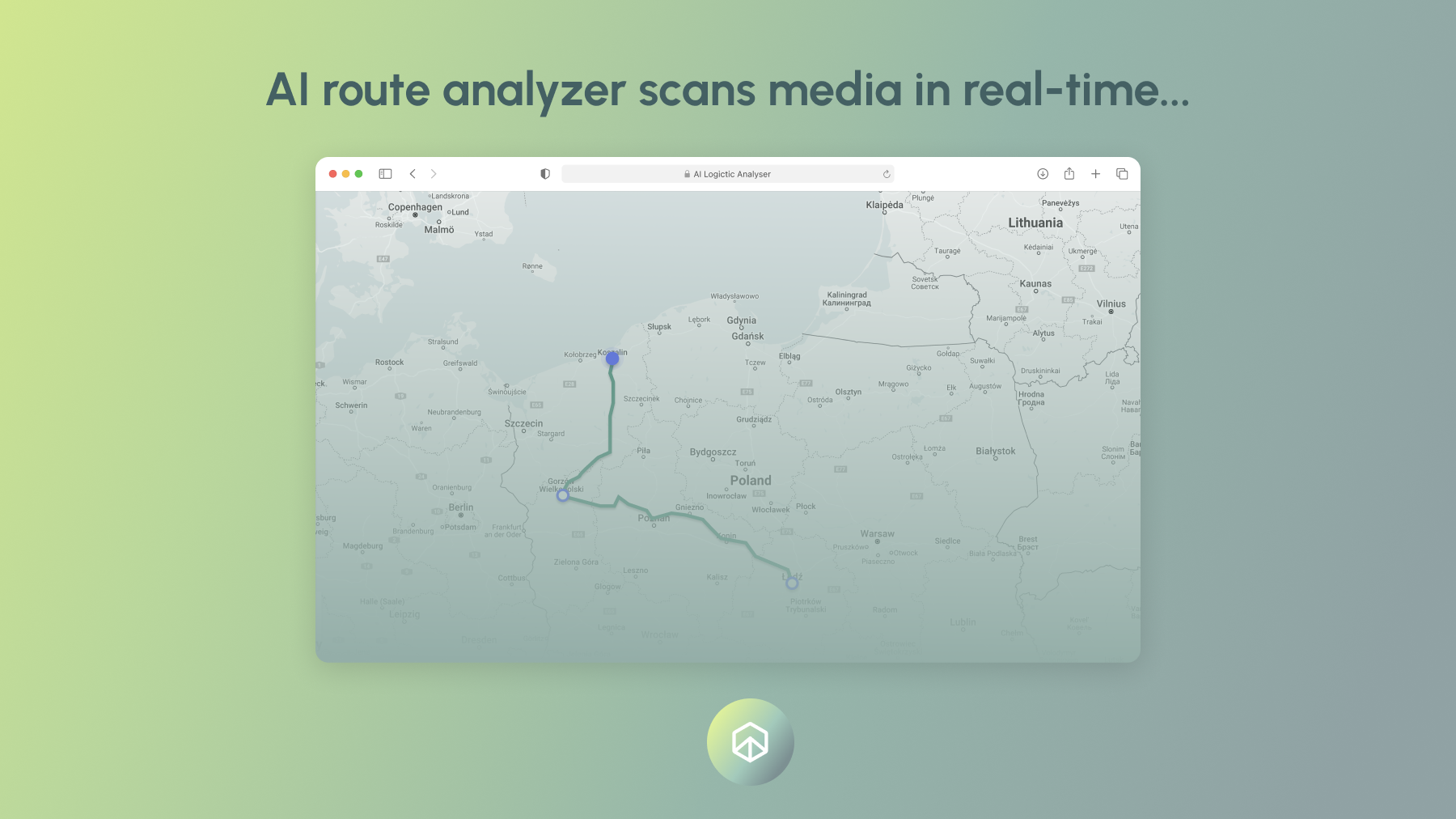AI
The Challenges of Applied AI: Trust, Robustness, and Real-World Understanding

There have been catastrophic outcomes from AI's use in high-stakes scenarios. In self-driving cars, failures have led to road crashes. In social media, algorithmic oversights have amplified misinformation. In critical infrastructures, disruptions have exposed vulnerabilities.
These incidents compel us to ask: Can we truly trust AI in dynamic, real-world environments? Moreover, how can we make AI systems more robust while operating in unpredictable surroundings? And most importantly, how do we teach AI to understand the real world, not just abstract patterns or predefined scenarios?
The Current State of Applied AI: Hurdles to Real Intelligence
Applied AI today still struggles to adapt to the subtle, dynamic changes in its surrounding environment. The fundamental question remains: does it possess the necessary insights to navigate unlearned or unforeseen contexts?
Discussions often equate AI with deep-learning models, but these methods rely heavily on the assumption of "independent and identically distributed" data—a significant limitation. While current deep-learning methods excel in classification tasks, regression, and pattern encoding, they falter when it comes to generalization and abstraction. These shortcomings hinder AI from achieving proper understanding and intelligent decision-making in complex, open-ended scenarios.
Bridging the Gap to "Real AI"
There’s optimism that scaling up deep-learning algorithms will eventually lead to "real AI." As Yoshua Bengio (2018) suggests, further development might close this gap. However, critics argue that current AI approaches merely encode general data distributions into neural network parameters. Without significant advances, these models cannot independently solve real-world problems, recognize causality, or plan logically.
So, where is the real intelligence? Proper intelligent behavior would encompass:
- The ability to recognize and define problems.
- Planning solutions with an understanding of physics, causality, logic, and analogy.
- Adapting to new situations and reasoning through unseen challenges.
Contextual Knowledge: The Key to Robust and Trustworthy AI
To make AI trustable and robust in dynamic environments, machines must better understand the context of the real world. This involves grasping the intricacies of their surroundings and their inner workings. Key areas of improvement include the following.
Causality over Correlation
Current AI struggles to distinguish causality from correlation. For example, understanding that "rain causes people to use umbrellas" is causality, but "carrying an umbrella does not stop the rain" is a necessary nuance. Incorporating causality into AI systems will enhance their ability to make sound decisions and provide explanations for their actions.
Counterfactual Reasoning
AI must learn to consider counterfactuals, such as: “If a crane lacks a counterweight, it will topple over.” This ability is crucial for preventing errors and improving system reliability.
Transferability Across Domains
Currently, transfer learning in AI works only within small, closely related tasks. For example, a model trained to recognize road signs might struggle to identify workplace safety signs. Building AI that can transfer knowledge across vastly different domains will unlock its true potential.
Resilience against Adversarial Attacks
Small, deliberate changes to input data can cause deep-learning models to fail catastrophically. Developing abstraction mechanisms to withstand such attacks will make AI more secure and reliable.
Planning and Problem-Solving
Beyond reactive responses, AI must learn to plan for potential outcomes, identify problematic scenarios, and adapt goals dynamically. For instance, an autonomous delivery drone encountering severe weather should reroute or delay while prioritizing safety and efficiency.
The Path Forward: Hybrid Approaches for Generalized Intelligence
A promising direction lies in hybrid AI models combining connectionist and symbolic approaches:
- Intuition Layer: Mimics human intuition using deep learning for low-level pattern recognition. For example, identifying anomalies in welds based on years of data-driven experience.
- Rationality Layer: Incorporates explicit rules, such as teaching a child not to touch a stove, a single lesson that prevents lifelong harm.
- Logical Layer: Embeds causality, analogy, and reasoning capabilities to interpret complex scenarios.
- Planning Layer: Divides problems into sub-tasks, sequences them, and adapts plans dynamically using feedback from the environment.
For example, the MIT-IBM Watson Lab’s Neuro-Symbolic AI system demonstrates how hybrid approaches can excel. It combines deep learning with logical reasoning to answer complex queries in knowledge-intensive fields like medicine. For example, it can diagnose conditions by understanding relationships between symptoms, causality, and medical history while also providing explanations for its conclusions.
This hybrid approach ensures robustness and enhances AI’s ability to generalize knowledge across different problems.
Our Latest Experiments: Logistics AI Assistant
Our latest experiments were within the logistics industry, and here’s what we’ve discovered. For example, let’s set that your logistics AI assistant reviews a digital map displaying 50 possible routes for delivery. It analyzes:
- Current traffic patterns and potential jams based on live updates.
- Contextual details like holidays, local events, or rush hours might affect the journey.
- The delivery time frames for each stop and the urgency of each package.
- The number of delivery stops, prioritizing based on package type or delivery SLA (e.g., fragile or express).
- Vehicle-specific constraints like fuel efficiency, cargo capacity, or even driver availability.
Using this information, the assistant selects the optimal route and determines the best start time to avoid delays and maximize efficiency.
Idea 1: Solving Complex Routing with AI

Scenario: You’re managing deliveries for a set of goods with three stops. The stops aren’t ordered, and you’ve got a map with critical constraints:
- Traffic congestion zones where speeds don’t exceed 20 km/h.
- Limited visibility of the overall route efficiency without manual calculations.
Here’s where the AI assistant shines:
- Input the Data: Feed the assistant the locations of the stops, the current traffic situation, and relevant constraints.
- Processing the Data: The AI analyzes:
- Distances between stops.
- Known congestion zones and speed limits.
- Delivery time frames for each stop.
- Optimal Route Planning:
- The AI determines the most time- and fuel-efficient route by calculating:
- Time savings from avoiding traffic bottlenecks.
- Fuel efficiency by minimizing unnecessary detours.
- It sequences the stops in the most logical order, balancing constraints with priorities.
- The AI determines the most time- and fuel-efficient route by calculating:
Why This Route? Let the AI Explain
Using advanced models, such as Claude 3.5 Sonnet or similar LLMs, the assistant can go a step further by explaining its decisions. For example:
- Route Analysis: "This route avoids a high-traffic zone near Stop 2, saving an estimated 15 minutes. While it adds 2 km, this trade-off optimizes fuel usage and delivery time."
- Stop Prioritization: "Stop 3 was prioritized first due to its tighter delivery window, despite its location being farther from the starting point."
- Dynamic Adjustments: "Traffic data indicates congestion near Stop 1 from 4–6 PM. Starting the route at 6 PM avoids this delay."
This explainability builds trust in the assistant’s recommendations and allows for seamless collaboration between humans and AI.
Why is this assistant efficient?
- Real-Time AdaptabilityThe assistant dynamically adjusts routes based on live updates, ensuring your logistics operation stays efficient even in unpredictable conditions.
- Context-Aware Decision-Making By integrating data from APIs or databases, such as weather reports, traffic updates, or customer preferences, the AI goes beyond static algorithms.
- Improved Efficiency and Sustainability
- Save fuel by reducing travel distances and idle times.
- Ensure on-time deliveries, enhancing customer satisfaction and SLA compliance.
- ScalableWhether managing a local fleet or a global logistics network, the AI assistant scales effortlessly to meet your operational needs.
This vision aligns with the next generation of AI: hybrid systems that combine powerful deep learning with logical reasoning. The logistics AI assistant could integrate:
- Knowledge graphs to understand and manage complex relationships, such as supply chain hierarchies or delivery dependencies.
- Neuro-symbolic AI for reasoning through constraints and exceptions, ensuring smarter, explainable outcomes.
By combining connectionist methods (like route prediction) with symbolic reasoning (like understanding traffic laws or delivery priorities), the logistics AI Assistant becomes a true game-changer in supply chain efficiency.
Future Directions: Towards Context-Aware AI
The latest developments in applied AI show great promise in advancing from observational learning to contextual understanding. Key trends include:
- Integration of Knowledge Graphs: Leveraging domain-specific knowledge to improve decision-making.
- Enhanced Transfer Learning: Training AI to apply learned knowledge to diverse, unrelated tasks.
- Ethical AI Development: Ensuring transparency, fairness, and privacy in data usage.
- Scalable Hybrid Models: Balancing connectionist efficiencies with symbolic reasoning capabilities.
Toward Trustworthy AI in a Dynamic World
We believe that for AI to thrive in the real world, it must move beyond static pattern recognition to dynamic contextual understanding. Hybrid approaches, incorporating layers of intuition, rationality, logic, and planning, represent the next step in AI evolution. By fostering causality, counterfactual reasoning, and domain transferability, we can get robust, trustworthy, and generalizable AI systems.
AI’s potential is vast, but its success hinges on addressing fundamental challenges. The future of AI lies not just in learning from the past but in understanding and adapting to the present, empowering machines to navigate the complexities of the real world with intelligence and precision.

